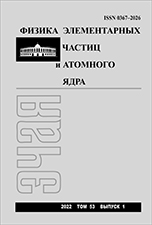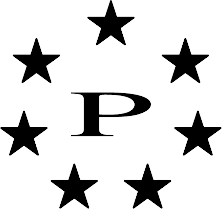Tetrad in SL(2;C) x SU(2) x U(1) Yang-Mills-Weyl spacetimes
Ключевые слова:
new tetrads; new groups; new group isomorphisms; gravity-Yang-Mills classical uni ficationАннотация
A new set of tetrads is introduced within the framework of SL(2;C) x SU(2) x U(1)
Yang-Mills-Weyl field theories in curved spacetimes. A set of field differential equations
is analyzed concerning the transformation properties of the tetrad vectors that
can be constructed out of the fields satisfying these equations. In previous work
it has been found the technique to build these tetrads. Here we are able to prove
additional construction properties regarding the new ''internal" groups of transformations
involved in the formulation. In particular we show how to switch the bosonic
''nesting" of tetrads associated to both groups, SL(2;C) and SU(2). We also show
that the usual two vector fields X, Y , necessary to gauge the tetrads, can be constructed
using currents, that is, Weyl spinors in curved spacetime. Employing our
new tetrads we prove that the local group SL(2;C) is isomorphic to local groups of
tetrad transformations, equivalent to say that the gravitational field is a gauge field.
A conjecture is raised in relation with the asymptotic properties of these tetrads.
We conjecture that within the set of solutions to the classical field equations we are
introducing, there could be one that we might be able to associate to or represent
the geometry of a microparticle like the Neutrino or its antiparticle, for instance.
We conjecture that we can associate spacetimes to microparticles since all the local
symmetries of the standard model can be realized in four-dimensional curved
Lorentzian spacetimes. The group isomorphisms between U(1), SU(2) x U(1) or
SU(3) x SU(2) x U(1) on one hand, and local groups of tetrad transformations on
the other hand have already been presented in previous manuscripts. In this regard,
the asymptotic limit for this set of equations, in particular the Weyl equation on
a Minkowskian background in the ''far" region, would be the starting point for the
standard Quantum Field Theory associated to this particular equation. Standard
Quantum Field Theories are then interpreted as devices that deal with perturbative
quantum ''interactions" between geometries that radiate (create) and absorbe
(annihilate) wave modes, but are otherwise never related to the spacetime background
geometries that undergo the radiation or absorption processes. Quantum
Field Theories just deal with perturbative interacting phenomena in the asymptotic
limit to these hypothesized background spacetimes. Isomorphism theorems involving
the group structure SL(2;C) x SU(2) x U(1) are proved. A gauge invariant method
to diagonalize the stress-energy tensor is discussed. Beyond the possible association
of spacetimes to microparticles, the results found in this work relating gravitation
to local internal transformations within the framework of SL(2;C) x SU(2) x U(1)
Yang-Mills-Weyl field theories, are worth being discussed by themselves as proper
mathematical and geometrical results. This is a paper about grand Standard Model
gauge theories - General Relativity gravity unification and grand group unification
in four-dimensional curved Lorentzian spacetimes.




